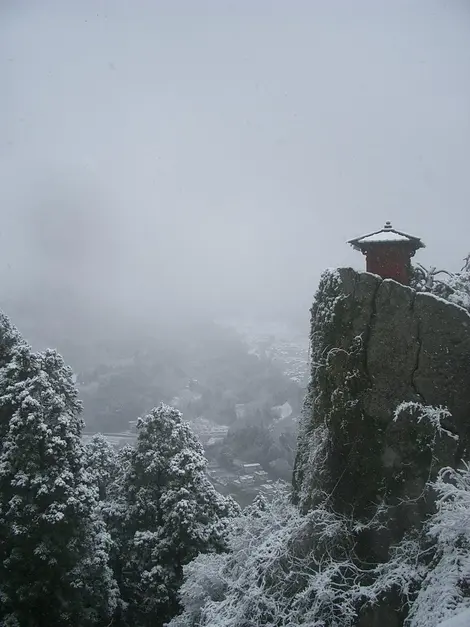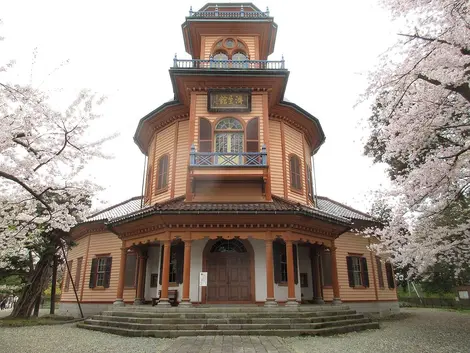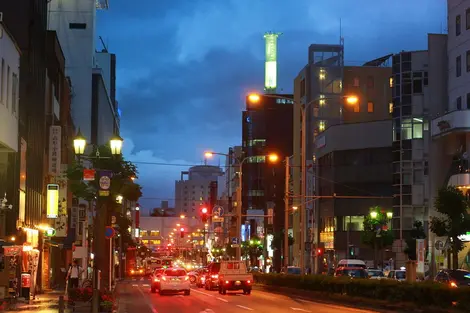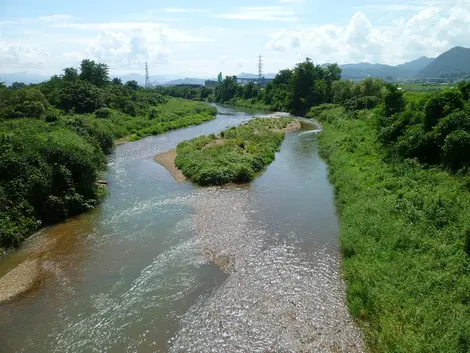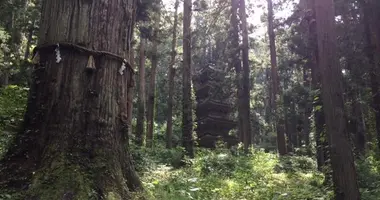Yamagata Travel Guide 山形市
- Published on : 17/10/2019
- by : I.D.O.
- Youtube
A HISTORIC TOWN SURROUNDED BY MOUNTAINS
YAMAGATA IS THE CAPITAL OF THE PREFECTURE OF THE SAME NAME, LOCATED IN THE TOHOKU REGION. SURROUNDED BY MOUNTAINS, BREATHE IN THE FRESH AIR IN A PROVINCIAL ATMOSPHERE AND ENJOY THE POINTS OF INTEREST. YAMAGATA WAS A SIGNIFICANT TOWN WHERE TRADE, CRAFTS AND AGRICULTURE PROSPERED. IT HAS A RICH HISTORICAL AND ARCHITECTURAL HERITAGE, AND REMAINS A LIVELY TOWN.
A rich historical and architectural heritage
For a long time, Yamagata was controlled by the powerful Mogami clan who made the city one of the largest estates in Japan during the Edo period (1603-1868). In 1357, Kaneyori Mogami built the Yamagata castle, called Ka-jo, and it was reconstructed and expanded in 1592. Although it never had a keep, it was the largest castle in the Tohoku region. Today, only the moat, stone walls and the East Gate, Ninomaru, are beautifully restored. The other buildings of this impressive castle are faithfully reconstructed. With its park with 1,500 cherry blossom trees, Kajo Koen was declared one of the “100 remarkable castles in Japan”.
Several famous museums are in the castle park
The town’s museum, Kyodokan, located in a former hospital, was built in 1876. It's unique architecture and its coloured constructions have earned it the title “Important Cultural Property of Japan”. The museum tells the story of the building and exhibits the medical equipment and documents from the time.
The Yamagata Prefectural Museum (yamagata-kenritsu hakubutsukan) has some 300,000 artefacts on display. It is best known for its famous statue of the "jomon goddess" (Jomon no Megami). A clay figurine dating back around 4,500 years during the Jomon period (1300 BC to 400 BC). In 2013, the museum created 3D replicas of the statuette, allowing visitors to touch them, and this saw visitor numbers increase considerably.
Another building of interest is Bunshokan. Built in 1911 in a European Renaissance style dear to the Meiji era (1869-1912), it houses the Yamagata prefectural government. The interior was magnificently restored, and is open to the public free of charge.
The Museum of Education. A charming museum located in Yamagata’s former public school, built in 1901 in a western style. Classed as an “Important Cultural Property”, it notably includes reconstructions of classrooms from the time.
Risshaku-ji, or Yamadera temple
Located in the north east of Yamagata, the Risshaku-ji temple, nicknamed Yamadera (“mountain temple”), is one of the main and oldest Tôhoku temples.
Founded in 860 by the Tendai Buddhist school, its buildings and grounds extend over Hoju-san mountain in its entirety! It is therefore through a forest of trees more than a century old, punctuated by caves and rocks with strange shapes that we find this beautiful site, full of serenity.
The famous poet Matsuo Basho, who visited the temple in 1689, dedicated a famous haiku to it:
“Silence, and penetrating the rock - the cicada's cry”
To the south of the temple is a big park, Fuga no Kuni, where the Yamadera Basho Commemorative museum is, where the poet's poems and scrolls are exhibited.
Mountains mean climbing, and you’ll have to climb no less than 1,110 steps to arrive at Oku-no-in shrine at the top. You’ll also find Godaigo observation platform, where the views will make you forget the tiring climb!
The temple's main building is Konpon-chudo. Reconstructed in the 19th century, it's classified as an important cultural property. Inside is a flame that was brought from Enryakuji Temple (in Kyoto) during its founding, which has been continuously maintained until today.
But it is the solitary pavilion perched on a rock overlooking the surrounding forests that makes Yamadera famous to the public. It's called Nokyodo, a small red pavilion housing sutras and was built 1,150 years ago.
- Access to Yamadera Temple: get off at Yamadera Station (18 minutes by train from Yamagata Station via the JR Senzan Line). The entrance to the grounds is 7 minutes walk from the train station.
What not to miss in Yamagata
It's a city that comes to life in the evening, especially around the station where you’ll find lots of restaurants, bars and izakaya serving local specialities: imoni, a local stew, or even the famous Yamagata beef. The region is also famous for its sake.
Finally, Yamagata is the gateway to the surrounding countryside where artisan villages, hamlets and enchanting natural sites await visitors.





